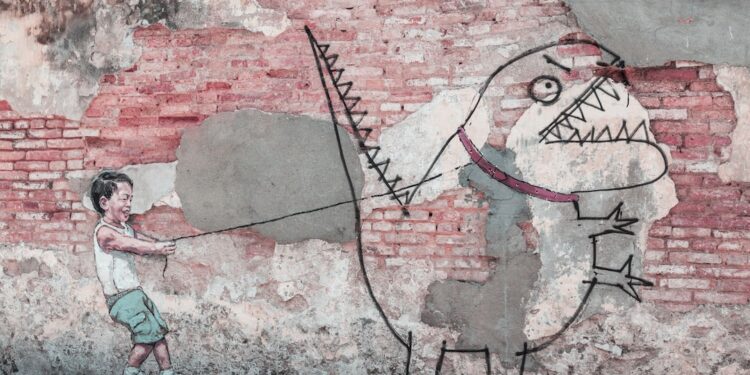The Evolution of Street Art: From Vandalism to High-End Galleries
Street art has come a long way from its early days as an act of rebellion and vandalism on the city walls. Once seen as a form of graffiti that defaced public property, it has now transformed into an accepted and celebrated art form, exhibited in high-end galleries around the world. The journey of street art from the streets to the galleries is not simply a shift in location, but also a testament to its cultural and artistic significance.
The origins of street art can be traced back to the rebellious spirit of graffiti in the early 1970s in New York City. Artists, wanting to make a bold statement and have their voices heard, began using spray paints and markers to leave their mark on walls, subways, and public spaces. At that time, this form of expression was seen as an act of defiance and an illegal activity and it was commonly associated with crime and vandalism.
However, as time went on, the perception of street art began to change. What was once considered as mindless defacement of public property started to be recognized as a form of artistic expression and a reflection of the social issues prevalent in society. Artists like Jean-Michel Basquiat and Keith Haring played a significant role in bringing street art to the forefront of the art world. Their works, which often featured political and social commentary, challenged the traditional notion of art and made a powerful impact on the viewers.
The evolution of street art gained momentum in the 1980s and 1990s, as artists began to experiment with new techniques and styles. Stencil art, characterized by the use of stencils and spray paints, started to emerge as a popular method used by street artists to create intricate and detailed artworks. Banksy, a renowned street artist whose true identity remains unknown, became a prominent figure in the graffiti art scene during this time, captivating audiences with his thought-provoking and satirical artworks.
As the popularity of street art continued to grow, so did the acceptance and appreciation for it. Galleries and museums started to recognize the artistic value of street art and began displaying it alongside other contemporary art forms. This shift from the streets to the galleries was a turning point for street art, as it garnered recognition from art critics and collectors. Street art was no longer seen as just an act of rebellion, but as a credible art form that represented the voice and creativity of a generation.
The inclusion of street art in galleries also brought about a change in the perception of its value. What was once considered as ephemeral and temporary, forced to be painted over or removed by authorities, were now being preserved, documented, and sold at high prices. Street artists who were once struggling to make ends meet were now gaining recognition and financial success. This shift in perception has brought many artists into the mainstream art world, blurring the boundaries between traditional and street art.
The rise of street art in high-end galleries has also led to a socio-cultural shift in the way we perceive public spaces. Previously, public walls were seen as blank canvases for graffiti, often associated with degradation and vandalism. However, the presence of street art has transformed these spaces into outdoor galleries, attracting tourists and art enthusiasts from around the world. Cities, recognizing the economic and cultural importance of street art, have started commissioning artists to create murals and installations that enhance the urban landscape.
In conclusion, the evolution of street art from vandalism to high-end galleries is a fascinating journey that reflects the changing attitudes towards this art form. What was once considered as an illegal act has now become an accepted and celebrated form of artistic expression. Street art has not only challenged the boundaries of traditional art but also affected social change and brought attention to important issues. As the cultural significance of street art continues to grow, it is essential to acknowledge its roots in rebellion and understand the transformative power it holds in our society.













